Following a series of interviews with over 20 world-renowned cellists, William Tan shares insights on optimising the art of performance
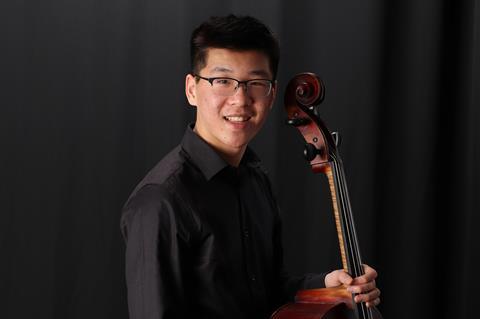
The nervous shuffle of feet backstage, the gradual crescendo of strings tuning together before the lights dim, and the collective first note of an ensemble’s piece—all of these are sounds we recognise from the unreplicable experience that is live performance. Musicians of all ages and levels have missed this collaborative feeling as in-person concert opportunities came to a standstill during the Covid-19 pandemic. After months of social isolation and draining online sessions, the visceral sights and sounds of a live performance felt almost foreign to me the first time I stepped on stage to perform again, as I’m sure they did for other musicians as well. The thrill of performing again came equally with the fear that all of those months off-stage had weakened my preparation and dulled my connection with the audience.
For aspiring musicians like myself, this year of purely online music-making has pressed pause on our development of performance skills that are integral to growth. Yet classical music’s ability to resonate with people from all walks of life depends on us pushing the boundaries of emotional connection and authentic communication through the art of performance.
Daily in our practice rooms, young musicians like myself spend hours centring pitches through slow intonation work, but we don’t always give the same amount of time to working on performance skills. While a great performance is only possible with a strong foundation built in the practice room, it does not just passively evolve as a product of conventional practice—it requires its own set of skills and its own process of development.
Where do we go to learn the art of performance? After searching through academic books and papers on musical performance, I realised that in fact, the best way for students like me to understand what goes into creating phenomenal performances is to turn to those who deliver them: professional musicians, and in my case, cellists.
Over the course of several months, I spoke to 20 renowned and influential cellists from around the globe, an experience ironically made possible by the pandemic-induced isolation. For example, Alban Gerhardt joined a Zoom call from a hotel room in Barcelona, Spain during a snowstorm, while David Finckel connected from his home while a recording session convened a few rooms over. All of the cellists generously shared their insights and techniques for building pre-concert routines, addressing anxiety and pressure, and connecting with the audience on stage.
Read: Sentimental work: David Finckel on Myaskovsky’s Cello Concerto
Read: Masterclass: Alban Gerhardt on Saint-Saëns Cello Concerto no.1
Using this knowledge, I created The Performance Project: A Guide to Mastering the Art of Performance, a resource for students to develop a specialised skill set for performances. The project covers the three main stages of the performance experience: ’Before the Performance,’ ’On Stage,’ and ’After the Performance.’ For musicians of all levels, this guide can provide the artistic advice and motivation to push for an even higher level of musicianship and connection through performance. I asked questions such as, how do professional cellists manage stage nerves, fuel themselves before a concert, and learn from each performance experience?
Award-winning cellists such as Brannon Cho, Sihao He, and Alexander Hersh find recording themselves, carefully planning out practice sessions, and giving trial runs for peers in studio classes to be useful concert preparation techniques. A system of purposeful physical preparation also contributes towards managing nervous energy. While nervous energy is something that all of these professional cellists face in every performance, they find ways to work with it and not against it. For instance, cellists Christine Lee and Mike Block suggest reflective mental exercises to calm their nerves and to keep their upcoming performance in perspective, while other cellists use breathing and centering techniques.
The strategies for preparation that appear in The Performance Project can be used to build a performance mindset—an individualised toolbox of tips and techniques that young musicians can turn to when confronting the specific demands of performing. The goal of this mindset should be to bring our absolute best for every performance in order to provide the audience with an unforgettable experience. Zlatomir Fung, the youngest winner of the International Tchaikovsky Competition, sums it up perfectly: ’You have to go 200% into that depth of physical awareness, so even when you get on stage and that unknown factor starts affecting you, it brings you from 200% to 100%. If you make your baseline performance extraordinary, you will have succeeded.’
To find the physical and mental focus to deliver this 100%, some cellists depend on routines on the day of a concert, while others prefer not to have a routine and instead rely more on spontaneity. Peabody Conservatory professor Amit Peled’s ideal performance day includes a routine of munching a Snickers bar and playing excerpts of famous cello repertoire backstage to warm up. By contrast, former Emerson Quartet cellist David Finckel chooses not to have a defined plan but to treat performances as normal, everyday events in order to bring his most genuine self to the stage.
Read: Amit Peled: Life Lessons
As the cellists I interviewed emphasised, an intentional approach to a performance can go a long way towards creating a shared emotional experience with the audience. ’Music is just energy in the form of waves that hit listeners throughout a performance,’ Johannes Moser, winner of the XII Tchaikovsky Competition, says. ’Without a strong intent to make every note count, you’re only creating noise.’ Finding effective ways to authentically represent a composer’s work while infusing personality and confidence is a difficult balance obtained only after hours of purposeful practice.
However, preparation strategies are often hard to put into action when we’re on stage under the spotlights. It is virtually impossible to predict the mistakes, struggles, or even moments of elation that will occur. While an analytical, critical mindset in the practice room is crucial to preparation, Arcanto Quartet cellist Jean-Guihen Queyras notes that an overly cerebral mindset on stage can be counterproductive. When it comes time for a performance, it’s best to lead with the heart. Renowned cellist Gautier Capuçon reminds cellists that a performance should be fun and engaging, no matter the unexpected occurrences that are bound to happen. Regardless of if a concert feels successful or not, any musician can take lessons from the experience and find renewed motivation towards improvement.
The advice contained in The Performance Project is not a rigid framework that must be entirely adhered to; the process of learning performance skills is not and should not be a ’one-size-fits-all’ approach’. To that end, I included a blank page at the end of the guide for each student’s thoughts because the project is not finished without their reflections and input. Each aspiring musician’s journey to unlocking a higher level of emotional connection is unique and personal, so my aim with the guide is that young musicians will include their voices as well. In a sense, anyone can create their own Performance Project and contribute their own strategies and insights to a community of musicians.
The cellists I interviewed reminded me that the best way to improve a performance is to experience performing as much as possible. Try to take every performance opportunity possible and leave everything out on stage, even if there are mistakes. Music is about being true to oneself and the composer, not always about being perfect. As Sihao He aptly puts it, ’Music touches souls, technique does not.’
As we slowly re-emerge after months of isolation, the world desperately needs meaningful human interaction and shared experiences. Now that we have the opportunity to perform live again, young musicians, myself included, have a responsibility to share classical music in its most authentic and persuasive form. ’Today, we need to stand by the music that we know, love, and respect as the greatest music that we know,’ David Finckel says. ’Never make apologies for it or dumb it down so that people can like it better, don’t apologise for any reason.’ Powerful performances can find new audiences and create connective and personal relationships with others in a post-pandemic world. With guiding resources such as The Performance Project and an ardent desire to push the boundaries of authentic communication through classical music, we as musicians, audience members, and individuals around the world can help our communities heal and music thrive.
The Performance Project was made possible by the contributions of Mike Block, Nick Canellakis, Gautier Capuçon, Brannon Cho, John-Henry Crawford, David Finckel, Zlatomir Fung, Alban Gerhardt, Sihao He, Alexander Hersh, Austin Huntington, Christine Lee, Johannes Moser, Amit Peled, Jean-Guihen Queyras, Molly Rife, Keith Robinson, Inbal Segev, Brant Taylor and Wendy Warner.
Listen: The Strad Podcast #13: Dr. Renée-Paule Gauthier on dealing with performance anxiety
Read: Returning to performing after suffering from long Covid
Read: Returning to playing after a break: top string teachers share their tips



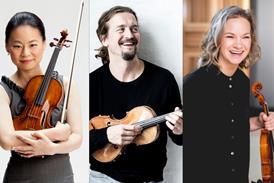
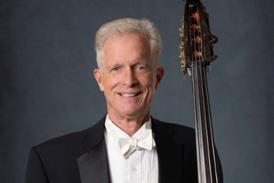
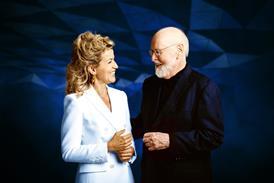





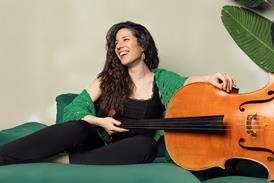























No comments yet